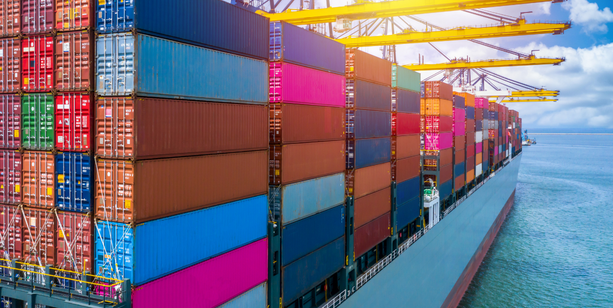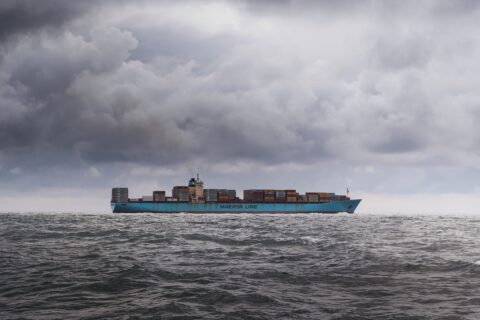
With the increased ability to ship goods and services at a moment’s notice, businesses are more willing than ever to take advantage of this new option. Unfortunately, that means there’s also a lot of SMEs who aren’t aware of potential pitfalls. If you’re just getting started with shipping or you operate within a niche market, it might not be obvious how much impact your mistakes will have on your business. But because even the most minor errors can snowball into massive costs for your company if you do them often enough over time, it pays to know what those are. But before we get into the low-down on what those are, let’s first take a look at why so many companies make these mistakes in the first place.
1. Misunderstanding Shipping Types
The first mistake many companies make when shipping is getting their shipping methods confused with what type of goods they’re shipping. In essence, most companies think that all types of shipping are the same. But there are actually two main types of shipping used by most businesses: carrier-shipping, which is done by a third-party shipping provider, and in-house shipping, which is the method a company uses to ship its own items. While both types of shipping have their differences, the most important difference between the two is that carrier-shipping is done by a third-party company while in-house shipping is done by the shipping company itself. While both have their uses and advantages, what makes carrier-shipping shipping more efficient is the fact that it’s done by a third-party company that specializes in shipping, has a large network of facilities, and is able to ship goods quickly and cheaply. In-house shipping, on the other hand, is usually done by a company-owned fleet of trucks and is generally slower, more expensive, and may be restricted to where the company ships from.
2. Misunderstanding Shipping Costs
The next common mistake that companies make when it comes to shipping is misunderstanding how much shipping will cost. As shipping is often a complex process involving a number of different steps, and is often dependent on the destination and how much is sent, it’s not surprising that many businesses don’t understand exactly how much shipping will cost. Unfortunately, it’s also not unusual for businesses to take on unnecessary costs when they ship beyond their control. Perhaps the most common example of this is businesses who don’t have a good grasp of the size and weight of the package they’re sending. In doing so, they may choose the cheapest carrier (usually the lowest cost option) to ship their item, but then assume that their item will fit in that smaller package. But because their item is too large for that package, it’ll be damaged and may end up costing the company more in damage fees than it would have been if it was properly sized for the package. Other times, businesses may assume that because a package is large, it means it’ll be expensive to ship. This isn’t necessarily the case, but it’s something to keep in mind because it can lead some companies to assume that they have no other option but to ship via expensive methods, like ocean freight. In reality, they may be able to ship via air freight or a less expensive method like a less-travelled route.
3. Mistaking Package Weight Ratings for Size Limits
One of the most common shipping mistakes that companies make is assuming that all packages are the same and are all permitted to be shipped by the same type of carrier. As we mentioned before, both carrier- and in-house shipping have their advantages and disadvantages, with in-house shipping being the most common method for most companies. But when choosing shipping methods, it’s important to note that the weight of the package is the main factor that determines the type of carrier that will be used. This means that for both the carrier and the package itself, the weight must be within certain limits for the package to be shipped by a certain type of carrier. It’s important to note that the weight limits for carriers are different from the weight limits of the package itself. This means that if a package is too heavy to be shipped by one carrier, it can still be sent by a different carrier. Additionally, the weight limits of the package can be increased with an excess weight surcharge.
4. Not Knowing What’s Considered Hazardous Goods
The final shipping mistake that many companies make is simply not checking what’s considered hazardous goods. When shipping goods, you are required to declare what type of goods are being shipped and to note if they are considered hazardous. There are a few different ways to do this. You can print a shipping label that lists the items being shipped and then also print a small box in the corner of the label with the following information:
- Hazard class: This is a three-digit number that corresponds to the Hazard Class of the good being shipped. This is the same as the general description of the goods on the shipping label.
- Consignment note: This is a brief note about the goods that can be printed on the shipping label. It’s important to note that any item that has a classification of 2, 3, 4, 5, 6, 7, 8, or 9 can be considered hazardous and must be shipped by a different type of carrier than other non-hazardous goods.
5. Using the Wrong Tools When Shipping Goods
The final shipping mistake that companies make is using the wrong tools when shipping goods. While it may be tempting to get a free shipping estimate online or pick up the phone and call a shipping company, this is the fastest and least accurate way of getting an estimate. The best way to get an accurate shipping rate is to go online and raise a request for an online quote. You also want to make sure you’re using the correct shipping method for the item you’re shipping, whether it be carrier or in-house shipping.
Conclusion
Shipping goods is a must for any business, whether you’re a small retailer who relies on only a handful of customers to make a living or a large international company shipping goods across the globe. Understanding what mistakes are most common when shipping goods and what to watch out for is essential to keeping your costs as low as possible while also making sure customers receive their goods as quickly as possible. The best way to avoid these common shipping mistakes is to know your goods, their packaging, and the best way to ship them. That way, you can ship goods as safely and efficiently as possible.
ProConnect Integrated Logistics for your Business
ProConnect is a third party logistics company incorporated in 2015 to capture the Middle Eastern 3PL market with prime focus on achieving optimal efficiency and customer satisfaction.
Wide reach, a vast network of agents, and years of industry experience – leave your shipping worries to ProConnect Integrated Logistics, a trusted freight forwarder in the region.
Be it large volumes of cargo, or just a few kilos; be it air, sea or road freight – businesses across the world have entrusted their freight shipping to us. Our expertise over the years has helped many businesses grow across boundaries. In addition to shipping, we also undertake custom clearance, import and export trade help that you may have along with offering you value-added services.
If you are looking for a partner to take care of all your logistics hassles, talk to us today.





 APP DOWNLOAD
APP DOWNLOAD